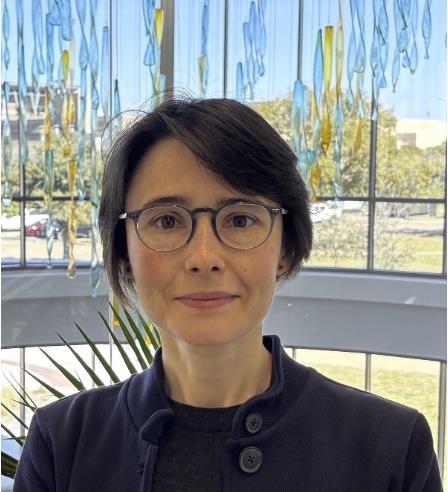Sylvie Estrela, Ph.D., has joined the Texas A&M College of Agriculture and Life Sciences Department of Nutrition as an assistant professor. Estrela’s research focuses on microbial interactions, specifically, the way nutrients can impact bacterial communities.

Estrela has been working in the field of microbe interactions for over a decade. She investigates how communities of different types of bacteria – like those found in the soil or in the human gut – assemble and interact, especially when it comes to their relationships with nutrients.
“Microbiomes are complex, dynamic ecosystems that are constantly adapting,” Estrela said. “In our lab, we aim to make sense of this complexity by applying ecological and evolutionary principles to understand how microbial communities form, function and respond to change.”
Top down and bottom up
Estrela uses two different approaches to answer her questions about microbial communities. The “top-down” approach starts with a complex, natural community – like the one found in the human gut – and then assesses what combination of species will do best in each environment.
The “bottom-up” approach starts with individual species and builds a community by putting them together to ask how those species interact with one another and then with their environment.
“I see both approaches as essential and highly complementary,” Estrela said. “In my own research, I combine both within the same experimental systems. Top-down systems help reveal general patterns – what consistently happens across diverse communities under defined conditions; while bottom-up systems allow us to dissect mechanisms and test specific theory-based predictions.”
Early-bird advantage
This mix of approaches has allowed Estrela to determine that fast-growing bacteria dominate over slow-growing bacteria in media with extra nutrients by gaining early access to them – a phenomenon she calls the “early-bird advantage.”
She has also determined that different species of bacteria will organize themselves in the same ways – based on their metabolic traits – when they are in an environment with limited food.
“While my work is rooted in basic science drawing from ecology, evolution, microbiology and systems biology, I am deeply motivated by the potential to apply these insights to human health challenges, especially promoting gut health through nutrition,” she said.
Research plans
Estrela said her research will focus on:
- How do our gut microbes assemble and how do they interact with one another?
- What microbes exist in different regions of the gut, what are their roles and does this change depending on the surrounding microbes or their environment?
- How does our nutrition affect the roles of microbes living in the gut?
“Our long-term goal is to translate this knowledge into nutritional strategies that promote gut microbiome health,” she said.
Educational background
Estrela earned a bachelor’s degree in biochemistry from the University of Porto in Portugal and her doctorate in evolutionary microbiology from the University of Edinburgh in Scotland.
Before joining Texas A&M, Estrela did her post-doctoral training at the University of Washington and Yale University and then joined Stanford University as a life science research scientist.
“I am excited to build a collaborative and interdisciplinary research team that brings together people with diverse expertise and skill sets, all driven by a shared curiosity about the microbiome,” Estrela said. “I am also excited to collaborate with researchers across Texas A&M. It is a big, vibrant campus with a strong culture of interdisciplinary science, and I am looking forward to building new connections across fields.”







No comments yet